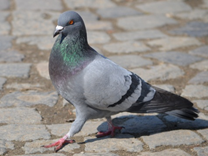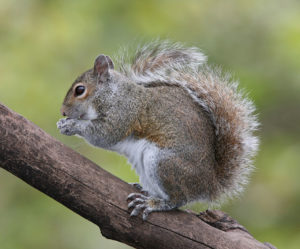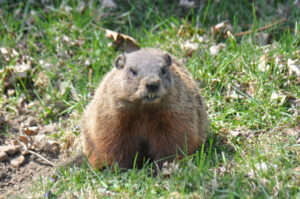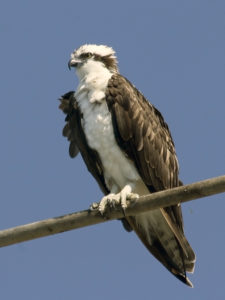 Those fine-feathered ‘peeping’ chicks which move in and take over all sorts of property are terribly annoying and cause serious problems. Yes, the pigeons ofcourse!
Those fine-feathered ‘peeping’ chicks which move in and take over all sorts of property are terribly annoying and cause serious problems. Yes, the pigeons ofcourse!
Pigeons can be found deep within cities and all the way out to some suburban areas as well. And these birds are considered to be prolific breeders, so, where you see a few, there are sure to be many more.
Pigeons occur worldwide except in the coldest regions and the most remote islands. About 250 species are known; two-thirds of them occur in tropical Southeast Asia, Australia, and the islands of the western Pacific, but the family also has many members in Africa and South America and a few in temperate Eurasia and North America.
Pigeons can be a real nuisance, there’s no doubt. And trying to induce them to move along can be stressful. Pigeons are fairly dirty birds. They carry a host of diseases and parasites and leave pounds of droppings each year. Some of them are Histoplasmosis, Candidiasis, Cryptococcosis, Psittacosis, etc.
One pigeon can deposit over 11 kilograms pounds of droppings per year!
Pigeon droppings are disgusting, to say the least. Their feces can attract vermin, such as mice, rats, and flies, and, because it is highly acidic, will stain, and possibly eat away the underlying surface. The caustic nature of pigeon droppings has caused significant damage to roofs. Their droppings can eat away at your roof, causing holes and leaks. Tar-based roofs are especially susceptible. The droppings can cause a huge mess to an apartment balcony and terrace, staining and threatening the surfaces of outdoor furniture.
 The acidic quality of pigeon droppings can eat away your car’s paint, causing significant and costly damage to your automobile. Anyone who has ever experienced pigeon “poop” on their car, home, or clothing, can tell you, it’s difficult to remove. Tar-like and heavy pigeon droppings are not like any other bird waste. The purpose for their durable dung is to keep their nests intact for the nesting season. In short, their droppings act as a binding agent, much like mortar to bricks.
The acidic quality of pigeon droppings can eat away your car’s paint, causing significant and costly damage to your automobile. Anyone who has ever experienced pigeon “poop” on their car, home, or clothing, can tell you, it’s difficult to remove. Tar-like and heavy pigeon droppings are not like any other bird waste. The purpose for their durable dung is to keep their nests intact for the nesting season. In short, their droppings act as a binding agent, much like mortar to bricks.
Pigeon manure deposited on park benches, statues, cars, and incautious pedestrians is an aesthetic problem. Pigeons consume and contaminate large quantities of food intended for human or livestock consumption around grain handling facilities like warehouses.
 The damage the bird’s fouling causes to historic buildings and monuments can be extensive. Apart from the obvious unsightliness, the main problem is acids released from their droppings. These can cause unrepairable damage to building surfaces resulting in damaging the appearance, the scarring of building structure and, potentially, causing thousands of pounds worth of damage.
The damage the bird’s fouling causes to historic buildings and monuments can be extensive. Apart from the obvious unsightliness, the main problem is acids released from their droppings. These can cause unrepairable damage to building surfaces resulting in damaging the appearance, the scarring of building structure and, potentially, causing thousands of pounds worth of damage.
Pigeon nests cause fires on electrical signs. Nesting materials such as Straw, twigs and dried droppings are usually very flammable due to their dry nature. When birds build their nests inside fire place ducts, electric signs or other areas where the nesting materials may be introduced to fire, there is a great risk of property damage.
Pigeons are considered the number one pest bird problem in the United States and around the world.
‘Nuisance birds’ crowd urban areas: study
PTI │ April 17, 2018
People living in crowded urban areas are more likely to see birds that can cause a nuisance than those that make us happy, a study has found.
Researchers at the University of Exeter and the British Trust for Ornithology in the UK found that crowded urban areas have fewer songbirds such as tits and finches, and more potential nuisance birds, such as pigeons, magpies and gulls.
They examined ratios of birds-to-people and found areas of high-density housing have fewer birds overall. People in green and leafy suburbs see up to three and a half times more songbirds and woodpeckers, associated with a positive impact on human wellbeing. The study was published in the Journal of Applied Ecology.
Previous research has suggested that people living in neighborhoods with more birds, shrubs, and trees are less likely to suffer from depression, anxiety and stress. PTI
Battle against pigeons at Woodbridge rail station prompts anger in town
Paul Geater │ February 26, 2018
Rail bosses have insisted they are keen to attract small birds to nest in and around Woodbridge railway station – but they are anxious to tackle an “infestation” of feral pigeons.
“But we have to do something about the pigeons. We have had an infestation of the birds and their droppings are very unpleasant.
“Not only do they look and smell very nasty, they are unhygienic and they are very acidic so they can cause considerable damage to the fabric of the station that has only recently been redecorated.
“We have to do something to reduce the problems they cause.”
Attack of the birds – huge flocks of pigeons wreak havoc on farmer’s crop
By Louise Hogan │ January 23, 2018
Huge flocks of pigeons that have turned to grazing oilseed rape crops in recent weeks are prompting serious concerns among tillage farmers.
Kildare-based grower Helen Harris, who farms with her husband Pete outside Clane, said she had never before witnessed the size of the pigeon flocks that have invaded their oilseed rape crops of late.
“There are thousands of birds in these flocks. We had six or eight lads out shooting in the fields and they were knocking 130-150 birds a day,” Ms. Harris said.
“But that has made no impression on the numbers. The pigeons are there 24-7. They just sit in the trees and wait for the boys to go.”
People consider anti-roosting spikes which create an “unperchable” environment and discourage the pigeon. But the spacing between the spikes does allow smaller birds, such as crows, starlings, house sparrows, magpies and gulls, etc to be fearless from landing or roosting. And even these birds have been found causing a nuisance.
Commercial gel-repellent used causes irritation to human eyes and eyelids can become glued together on contact. This clearly suggests that repellent gel can also glue the eyes of birds together. Also, as weather and wind take their toll on the gel, you will find it necessary to reapply every few weeks to months.
So, what can be done about these pesky pigeons, and how can you prevent damage to your home, balcony, terrace, courtyard, car, and just about anything pigeons can destroy?
There is a solution with C Tech Corporation to keep the birds away from perching and roosting.
CombirepelTM Bird repellent lacquer is the product produced by C Tech Corporation to prevent the menace caused by birds. This product is specially designed to prevent bird perching and roosting.
It is available in the form of concentrate lacquer. The product causes the bird’s pain receptors associated with taste. Some birds use their sense of smell through which they recognize that the product is a threat. The product is specially designed to prevent perching and roosting of birds. Repellent evokes a physiological effect which the birds associated with sensory cue and then learn to avoid it.
The product is anti-corrosive and water resistant and has no effect of UV light. The product is transparent and is compatible with most of the surfaces which are easy to apply.
Thus using the bird’s sensory mechanism we can get rid of them without causing them any physical harm.
Contact us at technical.marketing@ctechcorporation.com to keep the pests away.
Also, visit our websites:
1] http://www.ctechcorporation.com/
2] http://www.rodrepel.com/
3] http://www.termirepel.com/
4] http://www.combirepel.com/
Follow our Facebook pages at:
1] https://www.facebook.com/Combirepel-411710912249274/
2] https://www.facebook.com/Termirepel-104225413091251/
3] https://www.facebook.com/Rodrepel-120734974768048/
Follow us on our Twitter pages at:
1] https://twitter.com/rodrepel
2] https://twitter.com/termirepel
3] https://twitter.com/combirepel

 Rodents have a ubiquitous presence and are a nuisance to us. Rodents like squirrels, rats are notorious. They have a pair of incisors which grow throughout their life. Hence to keep them in check they constantly chew on anything they find hard like our wires and cables. They not only damage our wires and cables but they also affect the equipment at the power station.
Rodents have a ubiquitous presence and are a nuisance to us. Rodents like squirrels, rats are notorious. They have a pair of incisors which grow throughout their life. Hence to keep them in check they constantly chew on anything they find hard like our wires and cables. They not only damage our wires and cables but they also affect the equipment at the power station. They feed on green vegetables. They dine on beautiful flowers. They burrow holes in the ground.
They feed on green vegetables. They dine on beautiful flowers. They burrow holes in the ground. Swamp rats also known as orange-toothed species, coypu and nutria are the water-loving rodents that inhabit banks of rivers, lakes, lagoons, marshes, and swamps.
Swamp rats also known as orange-toothed species, coypu and nutria are the water-loving rodents that inhabit banks of rivers, lakes, lagoons, marshes, and swamps. Swamp rats breed quickly and the breeding is continuous throughout the year. Besides breeding quickly the Swamp rats consume a large amount of vegetation. They feed yearly on plants including grasses, sedges, reeds, water parsnip, and even water lilies.
Swamp rats breed quickly and the breeding is continuous throughout the year. Besides breeding quickly the Swamp rats consume a large amount of vegetation. They feed yearly on plants including grasses, sedges, reeds, water parsnip, and even water lilies. Rodents are a great threat to farmers as they destroy one percent of the world’s cereal crops on an annual basis. Rodents are the consumers of vitamin and protein-rich foods and often fed on crops embryo, stripping away germination capabilities and nutrients in the process. Rodents are notorious for contaminating food supplies, and one of the primary targets is grains.
Rodents are a great threat to farmers as they destroy one percent of the world’s cereal crops on an annual basis. Rodents are the consumers of vitamin and protein-rich foods and often fed on crops embryo, stripping away germination capabilities and nutrients in the process. Rodents are notorious for contaminating food supplies, and one of the primary targets is grains. Like the above-mentioned cases, there are many cases of rodent attacks on farms causing severe damage to crops and its productivity. Entomologist said 4.6 to 54% paddy crops were lost due to rat infestation. Rodent attack damage as much as 55% of horticultural crops. The extent of stored grain losses depends upon the distribution, abundance, and species composition of the rodent population involved.
Like the above-mentioned cases, there are many cases of rodent attacks on farms causing severe damage to crops and its productivity. Entomologist said 4.6 to 54% paddy crops were lost due to rat infestation. Rodent attack damage as much as 55% of horticultural crops. The extent of stored grain losses depends upon the distribution, abundance, and species composition of the rodent population involved. Birds are a major problem for utilities. They collide with overhead structures and conductors, they are electrocuted, and damage facilities leading to customer interruptions.
Birds are a major problem for utilities. They collide with overhead structures and conductors, they are electrocuted, and damage facilities leading to customer interruptions.